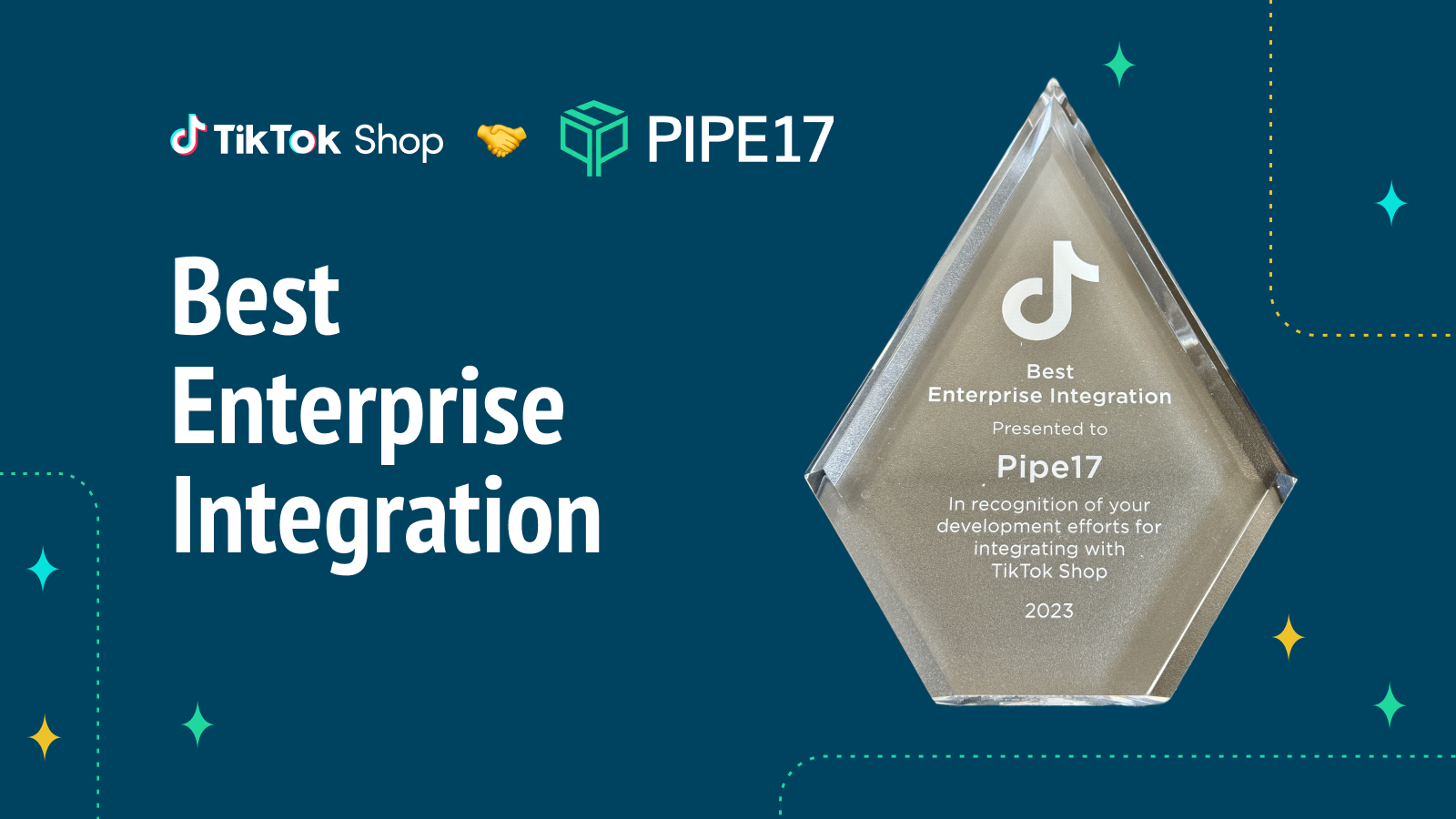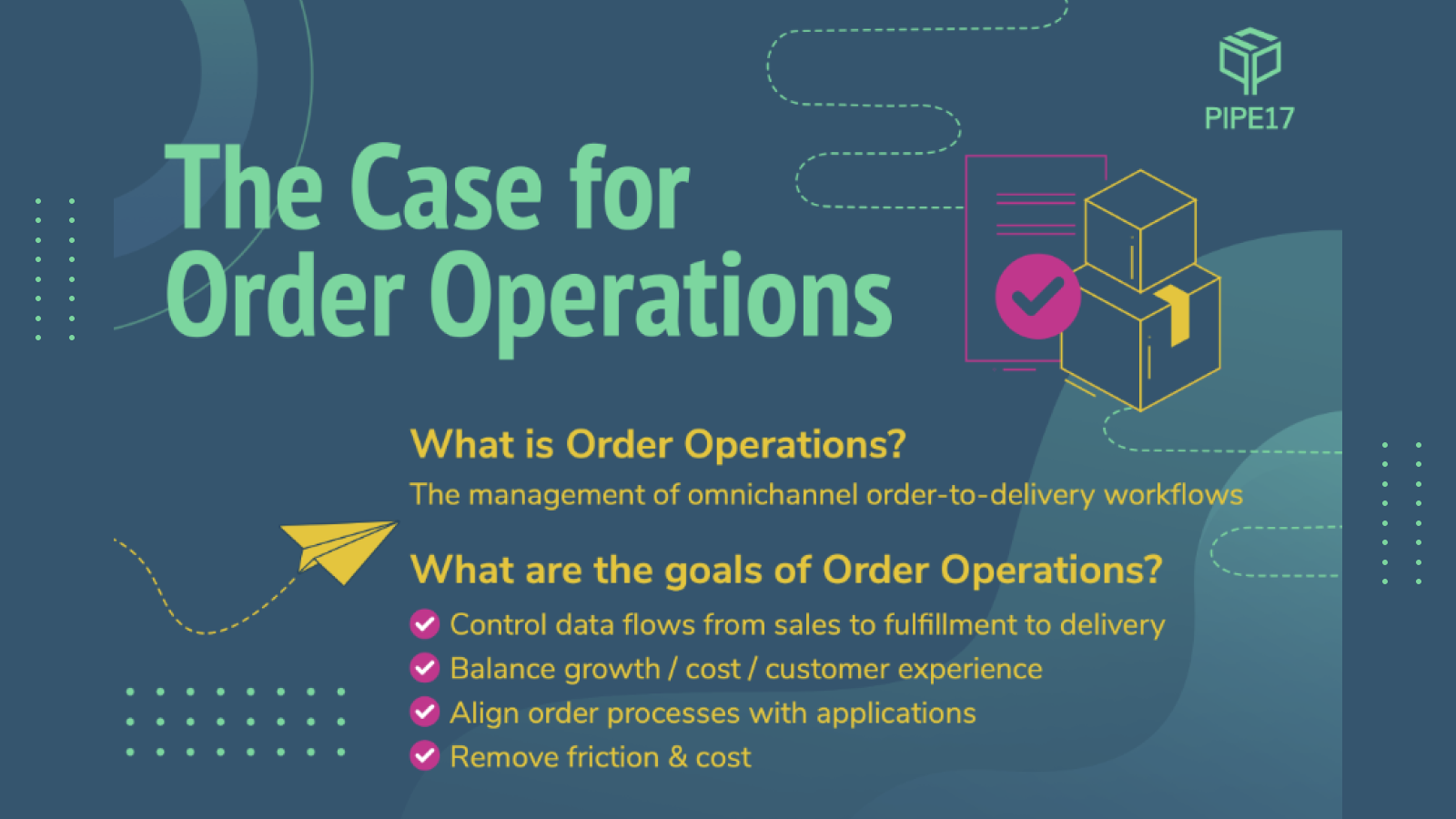Today’s eCommerce merchants have more choice in sales platform, technology, and software than ever before. That means there’s a growing need for connectivity that goes beyond what an eCommerce iPaaS can provide (at least in its traditional form).
The typical eCommerce tech stack can include marketplaces like Amazon, Walmart.com, eBay, Etsy, Wish, and more on top of a direct-to-consumer store running on Shopify, BigCommerce or even the newest headless commerce platform. It also incorporates applications for inventory management, warehouse management, ERPs like NetSuite, Acumatica or Odoo, 3PLs, CRMs, and much more.
Nowadays virtually all the software a merchant needs to run their business is available as a service from the cloud (also called Software as a Service or SaaS). Needless to say, there’s more choice than ever in eCommerce — and that should be a good thing. But not when you run into transaction and data loss.
The state of eCommerce connectivity today
Each eCommerce SaaS tool creates and manages its own data, resulting in “silo clouds,” where completing a process requires data to be updated across systems. The inventory that is used to fulfill an order on a Shopify or 3dcart store must be correctly accounted for in other systems. Orders may require different fulfillment procedures before handing off to a 3PL, depending on where and how they were generated. The number of times a day where data needs to be updated between systems can be staggering. And it grows as a merchant adds new channels or increases order flow.
Clearly the best scenario for a merchant is to have all their SaaS applications working together like a single system, while still being able to make changes as business grows. We already have this today with our data networks; Adding or swapping out a WiFi router is usually not a big deal. Wouldn’t it be great if eCommerce applications could connect and exchange data – orders, inventory, product catalog and fulfillments – in a similar manner?
eCommerce SaaS vendors have come up with several ways to help bring this vision of pervasive connectivity closer to reality.
Many SaaS options come equipped with their own Application Programming Interfaces or APIs, which provide direct access to the data in each system. You don’t have to worry about connecting 3dcart to Square, because both have an API. However, as the name suggests, working with an API requires writing a software program that will act as a go-between with the systems that need to communicate.
More and more eCommerce SaaS brands offer a library of integrations or connectors to other systems, these “point-to-point” connections mask the complexity of working with an API but they also have some limitations. Often SaaS vendors will provide connectors for just a few of the most important systems leaving the merchant to solve the rest of their problems on their own. Users have also reported problems with vendors staying current with endpoint APIs, which can lead to more headaches.
APIs and connectors are helpful but the fundamental problem is that eCommerce SaaS vendors can only go so far. For many, ensuring connectivity to other systems is a difficult choice that takes resources away from their main business. For others it’s a question of working with competitors. What’s needed is a vendor dedicated to providing a solution that meets the needs of merchants.
Enter Integration Platform as a Service (iPaaS), and how Pipe17 is creating something one step further for eCommerce.
What does iPaaS mean?
Integration-as-a-Service platforms supply cloud integrations between endpoint applications. Many also provide EDI and Value-added-Network integrations as well, especially when you choose hybrid (on-premises) models.
Whatever the case, iPaaS delivers connectors between software without the need for coding. You simply pay a monthly (or yearly) fee to access pre-built, sometimes pre-formatted, connectors between apps. Although technical skills are still required, the iPaaS service steps in to assist, eliminating the need to build out an extensive IT team.
Most also offer integration management and monitoring, customization tools, and may include options for premium custom integrations.
Why is an eCommerce iPaaS essential?
Historically, eCommerce merchants have relied on low-tech solutions like spreadsheets, documents, and even emails to move data around. None of these scale efficiently and all of them provide ample opportunities to introduce human error. Batch data integrations and XML also fail, mostly because they simply can’t support the volumes of data most eCommerce stores work with.
iPaaS solves this through pre-built connectors ready for immediate integration. Most importantly, it offers cross-communication so data pulled from one tool can push to other connected tools, and vice versa.
That allows retailers to develop custom integration workflows across apps for automation and data insight across inventory, shipping, provisioning, and everything in between.
As a cloud-based tool, iPaaS can scale rapidly to handle large order volumes, which can greatly reduce instances of over ordering and similar issues.
In short, it functions as a centralized hub for communication between apps, SaaS, and marketplaces. This creates a foundation for automation, data visibility, and order management, whether through an ERP or something else.
Fragmented eCommerce ecosystems
Although dozens of iPaaS solutions exist, many are insufficient. For example, most don’t focus on eCommerce specifically, meaning they don’t offer as many out-of-the-box eCommerce integrations as most retailers would like.
Software and settings are bloated and complex. Tools commonly offer integrator and workflow wizards for setups, but they require mapping data between systems, which you have to do yourself or pay for with an expensive custom integration. Often, the result of self-mapping is costly errors, such as inaccurate inventory imports or import failures.
Connectors frequently exist separately. A quick search for “NetSuite to Shopify” will return multiple single-functionality connectors. Those create many of the same problems as APIs and native connections, in that they don’t communicate with each other. Importing data from Shopify to NetSuite is pointless if it doesn’t also export to every other app you use.
Many connectors are incredibly technical — to the point where an IT team is required to manage them. In that case, most would have no reason to pursue iPaaS, as an in-house team can normally build the connectors themselves, or manage API integrations so they meet eCommerce needs.
iPaaS moves data between systems and nothing else. An iPaaS cannot distinguish the difference between an Order and an Inventory Item. To an iPaaS it’s all data. This limits the value they can deliver to merchants looking to reduce complexity in their tech stack.
There’s a lack of granularity within the system. Many iPaaS solutions don’t provide domain-specific tools that merchants can use to troubleshoot. For example, if they want to look into a 3PL to rerun orders that got stuck, they will need to go into a separate system yet again.
Common problems caused by poor connectors
Poorly configured, poorly set up, crashing, or improper connectors are everywhere. You see it whether you use individual tools to share data, have mapped a connector and the software updates, or use a lower-tech solution like Excel.
The biggest merchant complaints we hear are around reliability and performance. Connectors start dropping orders when order volume gets too high, which is followed by the inability to handle a specific type of transaction, necessitating more adjustments to your connector.
Relying on direct integrations
If you’re pushing data from marketplaces directly to a 3PL warehouse or other tool, you run the risk of miscommunicating information. For example, while many storefronts and marketplaces provide limited inventory management capabilities. If Shopify fails to update data, you could end up overselling, or have to update inventory changes in Shopify manually when sales are made on other sites.
Above all, direct integrations can be slow. So, if an order comes in on your Shopify site and passes to the 3PL, the order is accepted. Then, if a second order is placed on Amazon a few minutes later (or seconds, depending on the speed of your connections), but you only had one left in stock, the system will likely still accept the order because Amazon hasn’t updated your stock.
Failure to monitor endpoints and flag issues
Automating monitors to flag problems — such as incomplete fulfillment, SKU mismatch, problems with the connector, unexpected behavior in the system, etc. — is critical to ensure ongoing performance.
However, it’s impossible to do so without centralized management for all inbound data. Failure to monitor connections results in massive problems, like this broken Shopify connector, where one retailer had to process credit card data manually for over 500 orders.
Not accounting for volume of data
An eCommerce store transmits massive amounts of data, including credit card authorization, product information, pricing, inventory, and customer information like addresses. Every order creates a large quantity of information, which must be handled and responded to in a timely manner.
Managing this data manually, especially with an Excel system, is impossible as you scale. And, if connectors are unreliable or are mapped to specific items, they must be checked individually to ensure they work and are correct.
Individual connection failures
Whether you use a native tool or map connectors to your eCommerce tool, a single update can break it. With a network of integrations in place, it’s likely you won’t notice the issue until it becomes problematic and sales are lost, for example, if all your Shopify orders fail to export to your ERP.
Incomplete connections
As the business grows, new types of transactions come up that require your connectors to be updated or modified to continue working. This creates more data synchronization mistakes, can introduce oversights, and throws off inventory tracking.
How to ensure seamless integrations across your eCommerce tech stack
You have two ways to ensure your integrations are seamless. The first is to hire an in-house IT team, which can leverage native integrations and build the complex network of API and integrations needed to sync data across potentially dozens of platforms. Most importantly, an in-house team can stay on top of those connections, keep them functioning, and modify them when necessary.
The second, much more feasible option for most eCommerce retailers is to source an iPaaS platform – or as we say an Integration Application – designed specifically for eCommerce. Currently, Pipe17 is one of the only options built solely for eCommerce. That specificity allows Pipe17 to bypass much of the complexity of traditional iPaaS. It also means all integrations are eCommerce focused, so it’s unlikely you would ever have to map your own.
Pipe17 also supports eCommerce-based workflows (e.g. order routing, managing kit and bundle definitions between systems) for popular apps like Shopify, Magento, and Amazon and a variety of 3PLs. You can connect platforms to SaaS and create automated workflows to manage data in between. The combination of integration and automation specifically built for eCommerce helps merchants easily solve problems that in the past would require custom programming or additional SaaS applications.
Wrapping up — Taking an eCommerce iPaaS one step further
Connectors will make or break your ability to scale. As order volume increases, your ability to automate simple processes like accepting payments, forwarding orders, updating inventory across platforms, and tracking sales numbers in return apps will deteriorate. Integrations with iPaaS enable cross-platform automation, giving you workflows that don’t require manual intervention, copy-paste, or Excel. That seamlessness is what you need to scale without doubling your staff.






